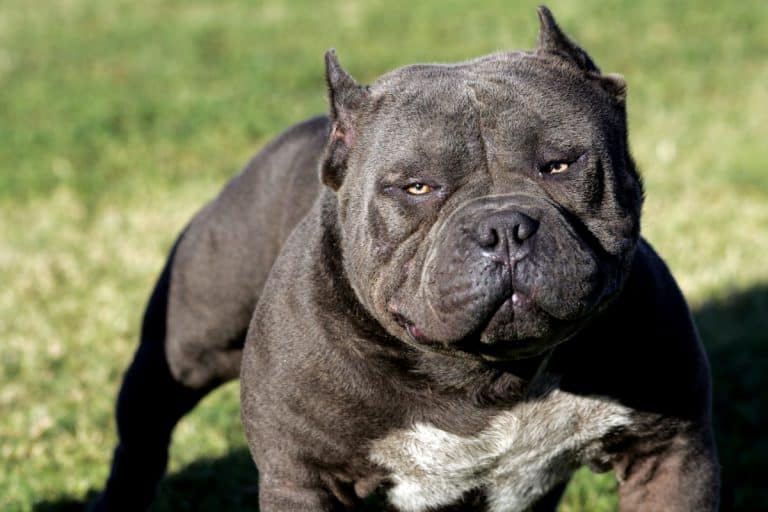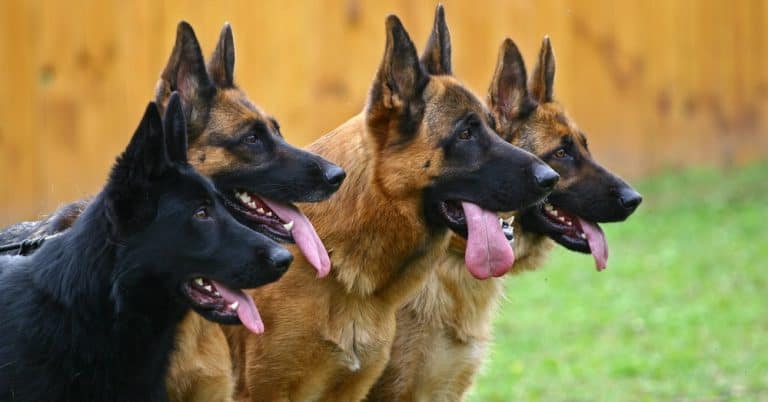Irish Wolfhound Weight Chart – Size & Growth Chart
Being a large breed, Irish Wolfhounds were used to hunt wolves, boar, and deer, but they are also loyal, patient, and thoughtful making them great companions.
Tracking your puppy’s weight using an Irish Wolfhound weight chart will ensure that they are staying healthy throughout their life.
Generally, adult Irish Wolfhounds weigh between 110 to 185 pounds with a height of around 30 to 35 inches. At two years, they are fully grown, and they have attained their adult height and weight.
This article will provide you with information on what to expect from an Irish Wolfhound growth chart, the health problems they are genetically predisposed as a breed, and many more!
When Is An Irish Wolfhound Fully Grown?
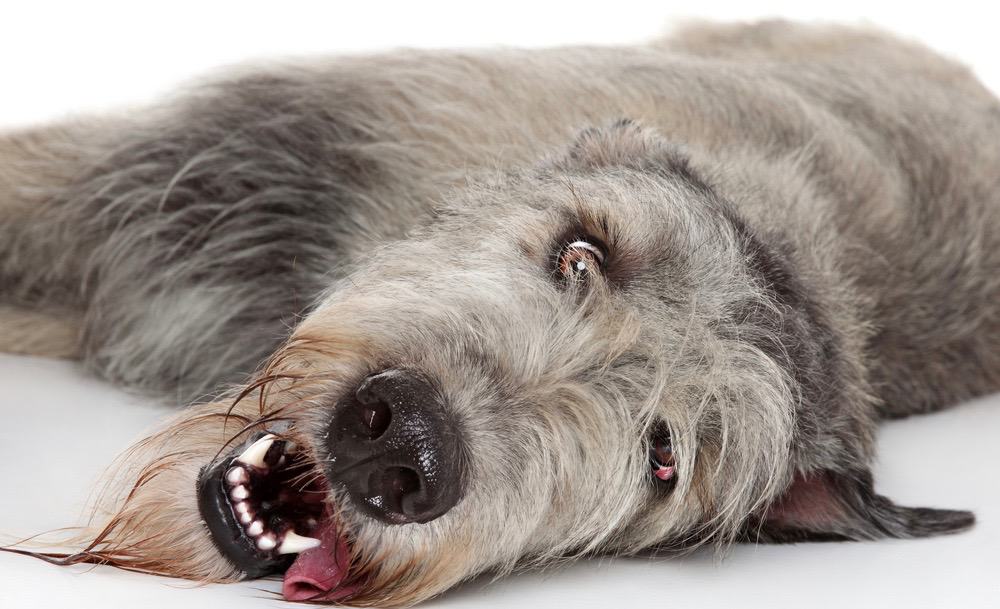
Generally, Irish Wolfhounds stop growing at around the age of two years because they are a large breed of dog. At this age, they have achieved their adult weight and height.
Irish Wolfhound puppies vary from litter to litter. Some puppies grow slow at the beginning while others have rapid growth, but they all reach the same size in the end.
The growth rate of an Irish Wolfhound depends on certain factors such as nutrition, environment, genetics, and physical activity. Some Irish Wolfhounds are smaller than average while others are larger than average.
Irish Wolfhound Weight Chart
Monitoring the weight of your Irish Wolfhound puppy at home will ensure that they maintain a healthy weight throughout their life.
When measuring your puppy’s weight at home, gently roll them in a towel and put them on the scale. This will ensure that they are not moving to allow you to get an accurate weight reading.
At three months, a male Irish Wolfhound should weigh between 23 and 37 pounds, at 6 months their weight should be around 80 and 110 pounds, and at 1 year they should weigh around 91 and 185 pounds.
On the other hand, a female Irish Wolfhound weighs around 19 and 37 pounds at 3 months, 79 and 107 pounds at 6 months, and 75 to 78 pounds at 1 year.
Irish Wolfhound Puppy Weight Chart
| Age | Male Weight | Female Weight |
|---|---|---|
| 3 Months | 44.7 lbs | 41.7 lbs |
| 4 Months | 64.9 lbs | 58.2 lbs |
| 6 Months | 98.3 lbs | 87.2 lbs |
| 8 Months | 117.1 lbs | 102.8 lbs |
| 10 Months | 129.7 lbs | 114.8 lbs |
| 12 Months | 136 lbs | 116.7 lbs |
| 18 Months | 144.7 lbs | 120 lbs |
| 24 Months | 149.8 lbs | 129 lbs |
| 36 Months | 161. 8 lbs | 132 lbs |
Irish Wolfhound Growth Chart – What To Expect
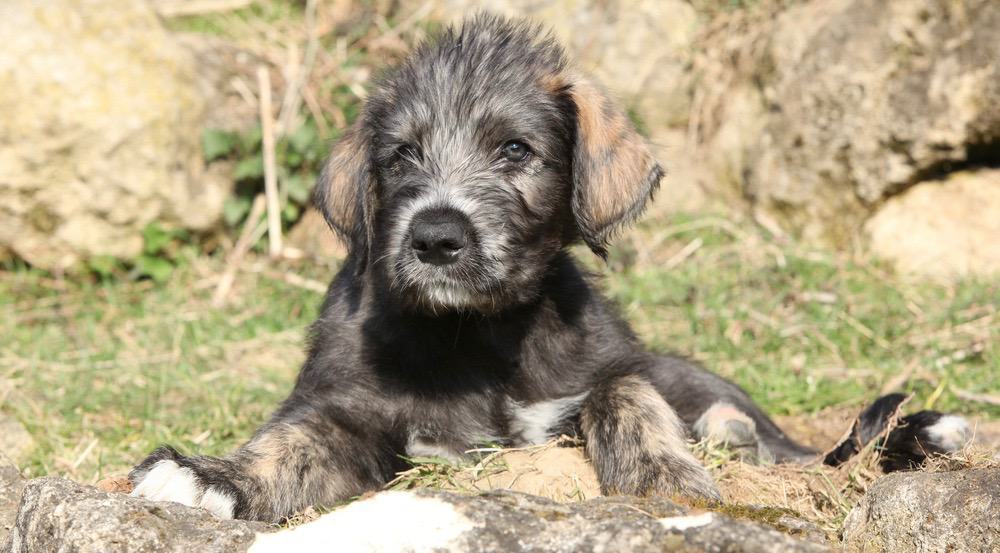
The following is what to expect in an Irish Wolfhound size chart:
Birth – 2 Weeks
When your puppy is born, they cannot see or hear because their eyes and ears are closed. At this stage, the puppy spends most of their time suckling and sleeping. Since they cannot regulate their body temperature, they depend on their mother for heat.
During the second week, the puppy’s eyes open and the forelegs become stronger. The breeder will begin worming the puppy at the end of week two.
3 Weeks – 12 Weeks
During the third week, the puppy will start standing and sitting up. Their tail will start wagging and their ears open completely. The puppy will start socializing and interacting with the littermates.
The breeder can start weaning the puppy at 4 weeks. At 8 weeks, the puppy can be transitioned to a new home. At 12 weeks, the puppy should be socialized because they start becoming fearful of unfamiliar people and places.
4 Months – 9 Months
During this stage, your Irish Wolfhound starts losing their puppy ‘look’ and starts resembling an adult. Your puppy will also start losing their baby teeth, but they will still be biting and chewing a lot.
This is the stage where females reach their first heat, and the males reach puberty. This is the right time to spay or neuter your puppy but speak to your vet before doing it.
10 Months – 18 Months
At this stage, your puppy has more energy and can now be involved in certain exercises. Your puppy will also reach their adult weight and height, but some puppies will still grow beyond the 18-month mark.
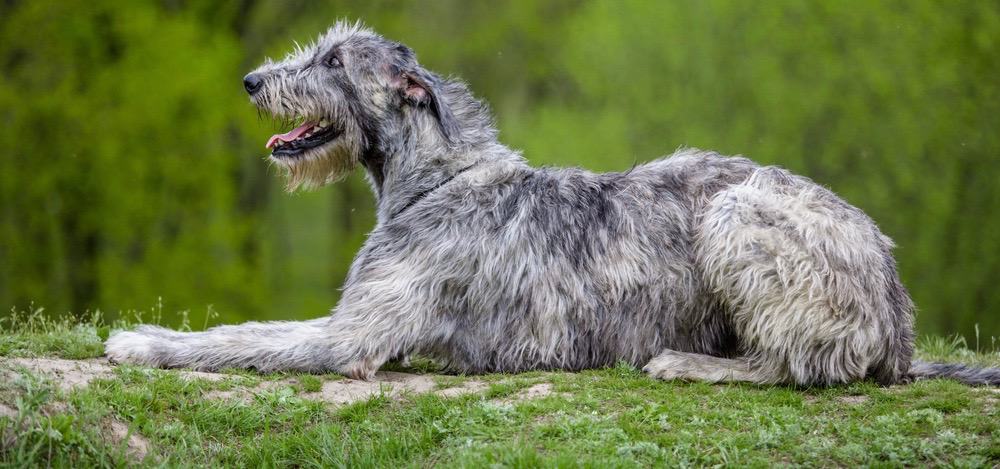
The puppy will start showing dominance and want to be the leader of the pack; therefore, training on discipline and obedience is still needed at this stage.
During this age, it is time to switch from puppy food to adult food. The transition should be done gradually to avoid upsetting your puppy’s stomach.
Adult
As an adult, your Irish Wolfhound is mentally, physically, and sexually mature. At this stage, your dog is making experiential and informed decisions.
Your Irish Wolfhound now needs your attention and care to ensure that they remain healthy and happy for the rest of their life.
Ensure that you feed your dog a healthy and balanced diet with all the necessary nutrients such as proteins, fats, vitamins, minerals, and antioxidants.
Providing adequate exercise to your dog at this age will ensure that they do not gain unnecessary weight.
How Big Do Irish Wolfhounds Get?
Irish Wolfhounds grow to be large dogs as adults. There are ways to know how big your puppy will get such as looking at the paws, parents, and doing a DNA test. The size of your puppy’s parents is a clear indication of the adult size of your puppy.
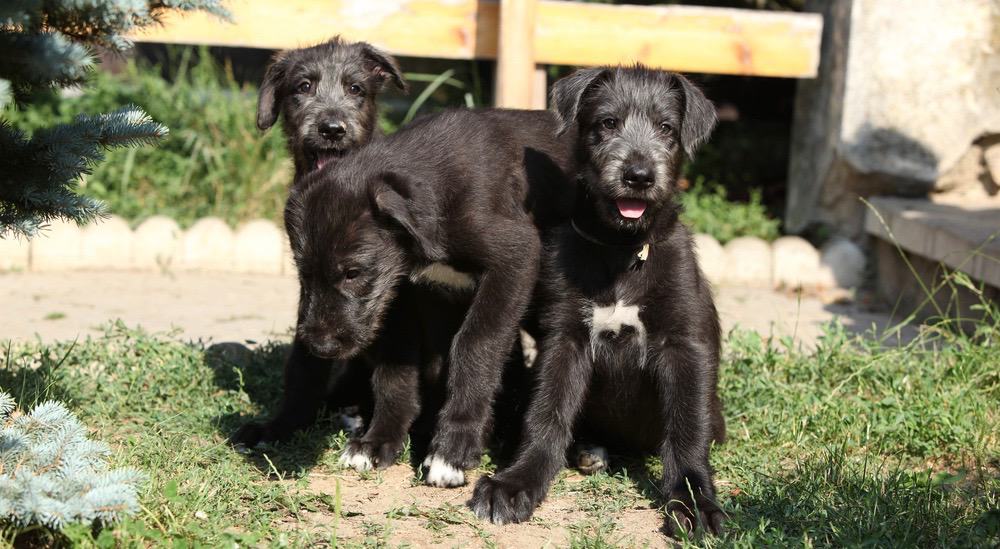
Your puppy’s paws are another indication of their size as adults. If the paws are large, your puppy will grow to be a large dog.
Doing a DNA test will give you an idea of how big your puppy will get based on the size of the relatives and parents.
On average, the Irish Wolfhound weighs between 110 to 185 pounds and stands between 30 to 35 inches.
Will Neutering/Spaying My Irish Wolfhound Affect His Growth?
Neutering is a surgical procedure that removes the testes in male dogs while spaying is the removal of ovaries in female dogs through surgery.
These procedures should be done when your Irish Wolfhound is between the ages of 6 and 12 months.
Neutering and spaying have certain health benefits such as lowering the risk of certain reproductive cancers, minimizes aggressive behavior, prevents breeding in male dogs, and pregnancy in female dogs.
However, if you spay or neuter your Irish Wolfhound at an early age their growth can be affected because the growth plates are not yet closed, and this can lead to joint disorders such as hip and elbow dysplasia.
Irish Wolfhound Size Chart
You can find out the height of your Irish Wolfhound at home using a measuring tape. Let your puppy stand straight against a wall and find their withers.

This is the highest point between the shoulder blades and is an inch below the neck. Measure from the neck to the withers, and this is your puppy’s chart.
On average, the height of a male Irish Wolfhound is around 32 inches while a female Irish Wolfhound is about 30 inches from the ground to the withers.
Great Dane vs Irish Wolfhound Size
Great Danes and Irish Wolfhounds are large breeds of dogs but have a difference in size. Irish Wolfhounds are taller than Great Dane.
Great Danes weigh between 100 and 180 pounds with a height of around 28 to 32 inches. On the other hand, Irish Wolfhounds stand at a height of around 30 to 35 inches making them the tallest breed of dogs and weighs between 110 to 185 pounds.
Factors That Affect Irish Wolfhound Growth
The following factors can affect the growth of your Irish Wolfhound puppy:
Genetics & Gender
Not all puppies grow at the same rate because no two puppies are the same. Some puppies can grow faster while others grow slower based on their genetic make-up. Also, some diseases that are inherited can affect the growth of puppies.
Gender is another factor that affects the growth of a puppy. Typically, female Irish Wolfhounds are slightly lighter and shorter than their male counterparts.
Nutrition
All dogs should be fed a balanced diet but there is a difference in the diet of puppies and adult dogs.
Puppies need to be fed three to four times a day and their diet should include a good balance of calcium, more fats, and proteins than adult dogs.
This is because they need to grow their muscles, bones, fur, teeth, internal organs as well as mentally grow.
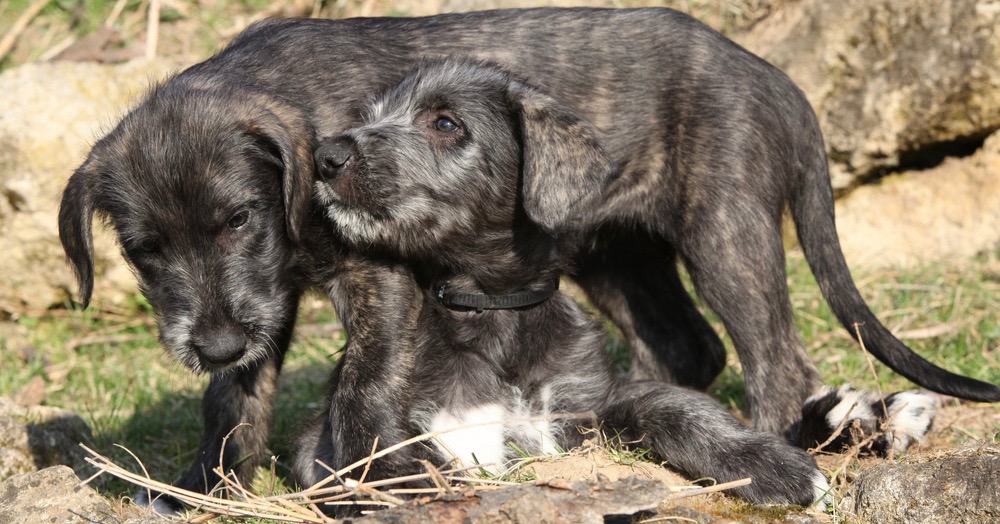
Adult Irish Wolfhound needs to be fed 2 times per day and their diet should contain fewer calories, fewer fats, less protein, and optimized levels of phosphorus and calcium.
Physical Activity & Health
Puppies less than 6 months old should be exposed to any type of physical exercise apart from playing. At this age, your puppy is growing fast, and their bones are still weak, hence too much exercise can cause skeletal disorders.
When your puppy is 6 months old and above, you can take them on short walks, and as they grow older, you can increase the length and frequency of their exercise.
An adult Irish Wolfhound needs 20 minutes of exercise twice per day to stay active and healthy.
What If My Irish Wolfhound Is Not the Right Weight?
Are you noticing that your Irish Wolfhound’s weight is not ideal for their age? If your puppy is overweight or underweight, you should be concerned and take them to the vet for a health check-up.
Your vet will rule out any illness that may be affecting your puppy’s weight and then guide you on how you can help them lose or gain weight at home.
To help your Irish Wolfhound lose weight, feed them healthy low-calorie foods, replace commercial treats for fruits and vegetables, and start exercising your puppy.
To help your puppy gain weight, increase the amount of food you are giving them and add supplements to their diet to provide the vitamins and minerals your puppy may be deficient in.
How Much Does It Cost to Own an Irish Wolfhound?
The initial cost of buying an Irish Wolfhound is between $1500 to $2500. The cost can be about $3000 if you buy a show-quality Irish Wolfhound.
Some factors affect the price of a Wolfhound puppy such as the type of breeder, bloodline, certifications, and location.
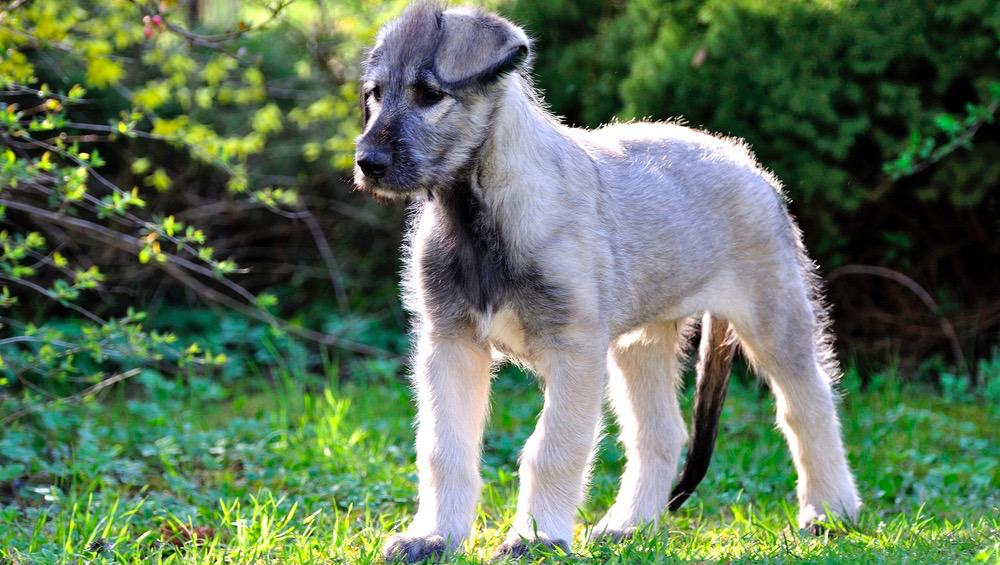
Apart from the initial cost of the puppy, there are other expenses that you will incur monthly or annually for the overall care of your Irish Wolfhound.
These include food, grooming supplies, medical care, pet insurance, licensing, and pet walking/sitting.
Irish Wolfhound Genetics and Common Health Problems
Irish Wolfhound can get any health conditions that other dogs are subject to, but they are genetically predisposed to the following illnesses:
Bloat – this condition is also known as gastric dilation where there is an accumulation of gas in the stomach leading to swelling in the abdomen. When the stomach expands, pressure is put on the veins and diaphragm causing your puppy to go into shock. This condition can be fatal if not treated immediately.
Heart Disease – atrial fibrillation is a common heart disease that affects Irish Wolfhounds. This condition weakens the muscles of the heart, and the common symptoms are loss of tolerance to exercise and a light cough. Cardiac drugs can be used to treat this condition and improve the function of the heart.
Bone Cancer – this cancer affects the bones of your puppy’s legs and causes pain and thinning of the bones. Signs of this condition are limping, heat, and swelling on the bone. Early detection through x-rays is key to treatment which can be amputation of the limb, chemotherapy, or radiation.
Lymph Node Cancer – symptoms of this condition include loss of appetite, not acting right, and unexplained weight loss. Some dogs can live comfortably when improved chemotherapy treatment is administered.
Pneumonia – this condition can be caused by bacterial infection, fungal infection, or inhalation of foreign substances. It should be treated for a period to prevent it from reoccurring.
Final Words
Most Irish Wolfhounds remain healthy throughout their lives, but some can be affected by certain health conditions such as pneumonia, bone cancer, heart disease, and bloat. Therefore, regular visits to the vet will ensure that any illness is caught at an early stage.
Walking is a great way to exercise your puppy, but you should be mindful of their age to avoid overexercising them. Adequate exercise and a balanced diet will keep your Irish Wolfhound healthy their entire lives.
When getting a puppy, ensure that the breeder is reputable because they will provide you with health clearances about the puppy’s parents and the puppy will likely come from a superior lineage.



